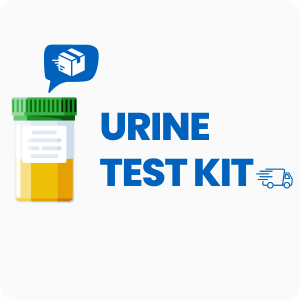Ordering the Organic Acids Test by Vibrant Wellness | Canada
Ordering the Organic Acids Test by Vibrant Wellness helps identify imbalances in gut bacteria, yeast, and metabolism that may be linked to symptoms like fatigue, mood changes, and digestive discomfort. Interestingly, this test can also reveal early signs of nutrient deficiencies before they show up in standard blood work, offering a unique window into how your body processes vitamins and minerals.
When ordering this test, you gain access to specific benefits:
- Detects markers for yeast and bacterial overgrowth that may contribute to bloating, headaches, and poor concentration
- Assesses mitochondrial function, which can impact energy and muscle strength
- Evaluates detoxification pathways, helping to identify issues with toxin removal
- Measures vitamin and nutrient metabolism, including B vitamins and antioxidants
- Highlights imbalances in amino acid breakdown that may affect mood and focus
Who Should Consider Metabolic and Gut Health Testing
People who experience ongoing tiredness, trouble focusing, or frequent digestive issues may benefit from this test. For example, someone who feels drained after eating, struggles with brain fog, and notices skin changes might find answers by checking for hidden metabolic or gut imbalances.
Ordering may also be helpful in these situations:
- Unexplained mood swings or irritability that do not improve with lifestyle changes
- Recurring headaches or migraines with no clear cause
- Difficulty maintaining a healthy weight despite regular exercise and balanced meals
- Frequent joint pain or muscle aches that are not linked to injury
- Unexpected food sensitivities that develop suddenly, which can sometimes be linked to changes in gut bacteria
Testing for these markers can help pinpoint the source of symptoms like fatigue, poor focus, or digestive discomfort by showing how your body processes nutrients and manages toxins. Delaying this test may allow imbalances to persist, making it harder to address symptoms and restore normal function.
How to Prepare for Metabolic and Microbial Marker Testing
Fasting is not required for this urine-based test, but certain foods and supplements should be avoided for 48 hours before sample collection. Always follow any instructions provided by your doctor or healthcare practitioner to ensure your sample reflects your typical metabolic and gut function.
Labs Included When Ordering Your Organic Acids Test by Vibrant Wellness
| Test Name | Reference Range | What This Marker Means | Low and High Levels of Organic Acids Test by Vibrant Wellness |
|---|---|---|---|
| Intestinal Microbial Overgrowth | |||
| Citramalic Acid | 0–7 | Citramalic acid is a byproduct of yeast and some bacteria. High levels may indicate yeast overgrowth in the gut. | High levels mean possible yeast or fungal overgrowth.
Low levels mean normal yeast activity. |
| 5-Hydroxymethyl-furoic Acid | 0–2 | This marker is linked to yeast metabolism. It can rise with certain fungal imbalances in the digestive tract. | High levels mean increased yeast or fungal activity.
Low levels mean yeast is not overactive. |
| 3-Oxoglutaric Acid | 0–3 | Produced by yeast and some bacteria, this acid can signal gut microbial imbalance when elevated. | High levels mean possible yeast or bacterial overgrowth.
Low levels mean balanced gut microbes. |
| Furan-2,5-dicarboxylic Acid | 0–2 | This compound is a marker for yeast and fungal metabolism, often linked to digestive symptoms. | High levels mean increased yeast or fungal activity.
Low levels mean normal yeast metabolism. |
| Furancarbonylglycine | 0–2 | A byproduct of yeast, this marker can rise with fungal overgrowth in the gut. | High levels mean possible yeast overgrowth.
Low levels mean yeast is not elevated. |
| Tartaric Acid | 0–3 | Tartaric acid is a yeast metabolite. High levels may be linked to symptoms like fatigue and muscle pain. | High levels mean yeast overgrowth is likely.
Low levels mean yeast is not overactive. |
| Arabinose | 0–29 | Arabinose is a sugar alcohol produced by yeast. Elevated levels can indicate Candida overgrowth. | High levels mean possible Candida or yeast overgrowth.
Low levels mean yeast is not elevated. |
| Carboxycitric Acid | 0–2 | This acid is a marker for yeast and mold exposure, often linked to gut and immune symptoms. | High levels mean possible mold or yeast exposure.
Low levels mean no excess yeast or mold. |
| Tricarballylic Acid | 0–2 | Produced by mold, this marker can rise with environmental or food-based mold exposure. | High levels mean possible mold exposure.
Low levels mean no excess mold detected. |
| Hippuric Acid | 0–250 | Hippuric acid is a breakdown product of gut bacteria and certain foods. It can reflect gut microbial activity and detoxification. | High levels mean increased gut bacteria or high intake of certain foods.
Low levels mean reduced gut bacterial activity. |
| 2-Hydroxyphenylacetic Acid | 0–5 | This marker is produced by gut bacteria and can rise with bacterial overgrowth or imbalances. | High levels mean possible bacterial overgrowth.
Low levels mean normal bacterial activity. |
| 4-Hydroxybenzoic Acid | 0–5 | A byproduct of gut bacteria, this acid can indicate changes in the gut microbiome. | High levels mean increased bacterial activity.
Low levels mean normal or low bacterial activity. |
| 4-Hydroxyhippuric Acid | 0–10 | This marker is linked to gut bacteria and can rise with certain dietary patterns or bacterial imbalances. | High levels mean possible bacterial imbalance or high intake of certain foods.
Low levels mean normal bacterial metabolism. |
| DHPPA | 0–2 | Dihydroxyphenylpropionic acid is a marker for beneficial gut bacteria. It can reflect fiber intake and gut health. | High levels mean increased fiber breakdown by gut bacteria.
Low levels mean low beneficial bacteria or low fiber intake. |
| 4-Hydroxyphenylacetic Acid | 0–5 | This marker is produced by Clostridia bacteria and can rise with certain gut imbalances. | High levels mean possible Clostridia overgrowth.
Low levels mean normal Clostridia activity. |
| HPHPA | 0–2 | 3-(3-Hydroxyphenyl)-3-hydroxypropionic acid is a marker for Clostridia bacteria, which can affect mood and behavior. | High levels mean possible Clostridia overgrowth.
Low levels mean normal Clostridia levels. |
| 4-Cresol | 0–2 | 4-Cresol is a byproduct of certain gut bacteria and can be linked to changes in gut function. | High levels mean increased Clostridia or other bacteria.
Low levels mean normal bacterial activity. |
| 3-Indoleacetic Acid | 0–10 | This acid is a breakdown product of tryptophan by gut bacteria. It can reflect changes in gut flora. | High levels mean increased bacterial breakdown of tryptophan.
Low levels mean normal tryptophan metabolism. |
| Indicators of Detoxification | |||
| Pyroglutamic Acid | 0–40 | Pyroglutamic acid is linked to glutathione recycling, which helps remove toxins from the body. | High levels mean possible glutathione depletion or oxidative stress.
Low levels mean normal glutathione metabolism. |
| 2-Hydroxybutyric Acid | 0–7 | This acid is produced during detoxification and can rise with oxidative stress or liver strain. | High levels mean increased detoxification demand or oxidative stress.
Low levels mean normal detoxification activity. |
| Orotic Acid | 0–2 | Orotic acid is a marker for ammonia excess and can reflect liver or urea cycle function. | High levels mean possible ammonia buildup or liver strain.
Low levels mean normal ammonia processing. |
| 2-Hydroxyhippuric Acid | 0–2 | This marker can rise with aspartame, salicylate, or certain bacterial exposures, reflecting detoxification activity. | High levels mean increased exposure to certain chemicals or bacteria.
Low levels mean normal detoxification. |
| Mitochondrial Markers | |||
| Succinic Acid | 0–17 | Succinic acid is part of the Krebs cycle, which produces energy in cells. High levels can signal mitochondrial stress. | High levels mean possible mitochondrial dysfunction or energy production issues.
Low levels mean normal energy metabolism. |
| Fumaric Acid | 0–7 | Fumaric acid is another Krebs cycle marker. It can rise with mitochondrial or metabolic stress. | High levels mean possible mitochondrial or metabolic dysfunction.
Low levels mean normal mitochondrial function. |
| Malic Acid | 0–7 | Malic acid is involved in energy production. High levels may reflect mitochondrial stress or energy deficits. | High levels mean possible mitochondrial dysfunction.
Low levels mean normal energy production. |
| 2-Oxoglutaric Acid | 0–7 | This acid is a key part of the Krebs cycle and amino acid metabolism. It can rise with mitochondrial or metabolic stress. | High levels mean possible mitochondrial or amino acid metabolism issues.
Low levels mean normal metabolism. |
| Aconitic Acid | 0–7 | Aconitic acid is another Krebs cycle marker. It can reflect energy production and mitochondrial function. | High levels mean possible mitochondrial stress.
Low levels mean normal energy metabolism. |
| Citric Acid | 0–300 | Citric acid is a main component of the Krebs cycle. It can reflect overall energy production in cells. | High levels mean increased energy production or possible metabolic stress.
Low levels mean reduced energy metabolism. |
| 3-Methylglutaric Acid | 0–2 | This acid is a byproduct of amino acid breakdown and can rise with mitochondrial dysfunction. | High levels mean possible mitochondrial or amino acid metabolism issues.
Low levels mean normal metabolism. |
| 3-Methylglutaconic Acid | 0–2 | This marker is linked to mitochondrial function and can rise with certain metabolic disorders. | High levels mean possible mitochondrial dysfunction.
Low levels mean normal mitochondrial activity. |
| 3-Hydroxyglutaric Acid | 0–2 | This acid is a byproduct of amino acid metabolism and can reflect mitochondrial health. | High levels mean possible mitochondrial or amino acid metabolism issues.
Low levels mean normal metabolism. |
| Amino Acid Metabolites | |||
| 2-Hydroxyisovaleric Acid | 0–2 | This acid is a byproduct of branched-chain amino acid breakdown. It can rise with metabolic or mitochondrial stress. | High levels mean possible amino acid metabolism issues.
Low levels mean normal amino acid breakdown. |
| 3-Methyl-2-oxovaleric Acid | 0–2 | This marker is linked to the breakdown of certain amino acids and can reflect metabolic function. | High levels mean possible amino acid metabolism issues.
Low levels mean normal metabolism. |
| 2-Hydroxyisocaproic Acid | 0–2 | A byproduct of leucine breakdown, this acid can rise with metabolic or mitochondrial stress. | High levels mean possible amino acid metabolism issues.
Low levels mean normal metabolism. |
| 2-Oxoisocaproic Acid | 0–2 | This acid is a byproduct of amino acid metabolism and can reflect mitochondrial health. | High levels mean possible amino acid metabolism issues.
Low levels mean normal metabolism. |
| 2-Oxo-4-methiolbutyric Acid | 0–2 | This marker is linked to methionine metabolism and can rise with metabolic stress. | High levels mean possible methionine metabolism issues.
Low levels mean normal methionine breakdown. |
| Mandelic Acid | 0–2 | Mandelic acid is a byproduct of phenylalanine metabolism and can reflect detoxification activity. | High levels mean increased detoxification or metabolic stress.
Low levels mean normal metabolism. |
| Phenyllactic Acid | 0–2 | This acid is a byproduct of phenylalanine breakdown and can rise with metabolic or gut imbalances. | High levels mean possible metabolic or gut issues.
Low levels mean normal metabolism. |
| Phenylpyruvic Acid | 0–2 | Phenylpyruvic acid is a byproduct of phenylalanine metabolism and can reflect metabolic function. | High levels mean possible metabolic or genetic issues.
Low levels mean normal metabolism. |
| Homogentisic Acid | 0–2 | This acid is a byproduct of tyrosine metabolism and can rise with metabolic or genetic conditions. | High levels mean possible metabolic or genetic issues.
Low levels mean normal metabolism. |
| 4-Hydroxyphenyllactic Acid | 0–2 | This marker is linked to tyrosine metabolism and can reflect metabolic or gut imbalances. | High levels mean possible metabolic or gut issues.
Low levels mean normal metabolism. |
| N-Acetylaspartic Acid | 0–2 | This acid is a marker for brain metabolism and can rise with certain neurological conditions. | High levels mean possible neurological or metabolic issues.
Low levels mean normal brain metabolism. |
| Malonic Acid | 0–2 | Malonic acid is a byproduct of fatty acid metabolism and can reflect mitochondrial function. | High levels mean possible mitochondrial or fatty acid metabolism issues.
Low levels mean normal metabolism. |
| Tryptophan Metabolites | |||
| Glyceric Acid | 0–2 | Glyceric acid is a byproduct of tryptophan metabolism and can reflect metabolic or genetic conditions. | High levels mean possible metabolic or genetic issues.
Low levels mean normal metabolism. |
| Glycolic Acid | 0–2 | Glycolic acid is a byproduct of glycine metabolism and can reflect metabolic or genetic conditions. | High levels mean possible metabolic or genetic issues.
Low levels mean normal metabolism. |
| Oxalic Acid | 0–40 | Oxalic acid is a byproduct of metabolism and can rise with certain foods or metabolic imbalances. | High levels mean increased intake of oxalate-rich foods or metabolic issues.
Low levels mean normal oxalate metabolism. |
| Ketone and Fatty Acid Oxidation | |||
| 3-Hydroxybutyric Acid | 0–2 | This acid is a ketone body and can rise with fasting, low-carb diets, or metabolic stress. | High levels mean increased fat breakdown or metabolic stress.
Low levels mean normal fat metabolism. |
| Acetoacetic Acid | 0–2 | Acetoacetic acid is a ketone body and can rise with fasting, low-carb diets, or metabolic stress. | High levels mean increased fat breakdown or metabolic stress.
Low levels mean normal fat metabolism. |
| 4-Hydroxybutyric Acid | 0–2 | This acid is a byproduct of fatty acid metabolism and can reflect mitochondrial function. | High levels mean possible mitochondrial or fatty acid metabolism issues.
Low levels mean normal metabolism. |
| Adipic Acid | 0–7 | Adipic acid is a byproduct of fatty acid breakdown and can rise with metabolic or mitochondrial stress. | High levels mean possible fatty acid metabolism issues.
Low levels mean normal fat metabolism. |
| Suberic Acid | 0–2 | Suberic acid is a byproduct of fatty acid metabolism and can reflect mitochondrial function. | High levels mean possible mitochondrial or fatty acid metabolism issues.
Low levels mean normal metabolism. |
| Sebacic Acid | 0–2 | Sebacic acid is a byproduct of fatty acid breakdown and can rise with metabolic or mitochondrial stress. | High levels mean possible fatty acid metabolism issues.
Low levels mean normal fat metabolism. |
| Ethylmalonic Acid | 0–2 | Ethylmalonic acid is a byproduct of fatty acid metabolism and can reflect mitochondrial function. | High levels mean possible mitochondrial or fatty acid metabolism issues.
Low levels mean normal metabolism. |
| Methylsuccinic Acid | 0–2 | Methylsuccinic acid is a byproduct of fatty acid breakdown and can rise with metabolic or mitochondrial stress. | High levels mean possible fatty acid metabolism issues.
Low levels mean normal fat metabolism. |
| Glycolytic Cycle Metabolites | |||
| Lactic Acid | 0–20 | Lactic acid is produced during glucose breakdown. High levels can reflect metabolic or mitochondrial stress. | High levels mean increased glycolysis or metabolic stress.
Low levels mean normal glucose metabolism. |
| Pyruvic Acid | 0–7 | Pyruvic acid is a key intermediate in energy production. It can rise with metabolic or mitochondrial stress. | High levels mean possible metabolic or mitochondrial dysfunction.
Low levels mean normal energy metabolism. |
| Pyrimidine Metabolites | |||
| Uracil | 0–2 | Uracil is a breakdown product of DNA and RNA. It can rise with metabolic or genetic conditions. | High levels mean possible metabolic or genetic issues.
Low levels mean normal nucleotide metabolism. |
| Thymine | 0–2 | Thymine is a DNA breakdown product and can reflect metabolic or genetic conditions. | High levels mean possible metabolic or genetic issues.
Low levels mean normal nucleotide metabolism. |
| Nutritional Markers | |||
| N-Acetylcysteine Acid | 0–2 | This marker reflects cysteine metabolism, which is important for antioxidant production and detoxification. | High levels mean increased cysteine breakdown or detoxification demand.
Low levels mean normal cysteine metabolism. |
| Methylcitric Acid | 0–2 | Methylcitric acid is a marker for vitamin B12 metabolism and can rise with certain metabolic conditions. | High levels mean possible vitamin B12 metabolism issues.
Low levels mean normal B12 metabolism. |
| Methymalonic Acid (Vit B12) | 0–2 | Methylmalonic acid is a sensitive marker for vitamin B12 status. High levels can indicate B12 deficiency. | High levels mean possible vitamin B12 deficiency.
Low levels mean normal B12 status. |
| Pyridoxic Acid (Vit B6) | 0–2 | Pyridoxic acid is a marker for vitamin B6 metabolism. It can reflect B6 status and metabolism. | High levels mean increased B6 breakdown or supplementation.
Low levels mean possible B6 deficiency. |
| Pantothenic Acid (Vit B5) | 0–2 | Pantothenic acid is a marker for vitamin B5 status, which is important for energy metabolism. | High levels mean increased B5 intake or metabolism.
Low levels mean possible B5 deficiency. |
| Glutaric Acid (Vit B2) | 0–2 | Glutaric acid is a marker for vitamin B2 metabolism and can rise with certain metabolic conditions. | High levels mean possible B2 metabolism issues.
Low levels mean normal B2 status. |
| Absorbic Acid (Vit C) | 0–2 | Ascorbic acid is vitamin C. This marker reflects vitamin C status and antioxidant capacity. | High levels mean increased vitamin C intake or supplementation.
Low levels mean possible vitamin C deficiency. |
Reference ranges may change slightly as labs update their methods and guidelines.
Organic Acids Test by Vibrant Wellness FAQ
Is there Organic Acids Test by Vibrant Wellness testing near me?
This test is provided as a kit that you can collect at home or at a local draw site, with locations listed in the draw location link above. For those experiencing ongoing fatigue or digestive symptoms, having a nearby collection option makes it easier to get tested without added travel or stress.
How do I interpret the test results?
While your treating physician should review your results, you can also schedule a one-on-one test results review with our clinical team for a detailed explanation and next steps.
What is the cost of the test?
The price for this test includes standard shipping to your address and return shipping to the lab, though draw fees may apply. Ordering this test can help you address symptoms like fatigue or brain fog more quickly by identifying specific metabolic or gut imbalances.
How often should I retest?
Retesting is usually recommended every 6 to 12 months, especially if you are making changes to your diet or supplements, or if symptoms return. Regular testing helps track improvements and catch any new imbalances early.
How accurate is the test?
This test uses advanced mass spectrometry and gas chromatography to measure organic acids in urine, with a specificity of 98% and sensitivity of 97%. TrueHealthLabs.com partners with CLIA-certified and CAP-certified laboratories to uphold rigorous testing standards for dependable results.
Important Notes
- This test can be mailed and collected in Canada. You will be responsible for the shipping costs.
- We do not advise discontinuing any necessary medications or supplements. We recommend you consult with your primary doctor before making any changes to your medication or supplement intake.
- Some foods can affect the test results. We recommend avoiding apples, grapes, raisins, pears, cranberries, dried cranberries, and any juices from these fruits for 48 hours before collecting your samples. You should also avoid the following supplements which may affect test results if taken within 48 hrs prior to the collection: ribose, arabinogalactan, echinacea, and reishi mushrooms.
Medical Review Board
Reviewed by Jeff Donohue M.D. from Body Logic and Brady Hurst DC, CCCN. Written by True Health Lab’s team of editorial health contributors.
Disclaimer: This information is for educational purposes only and not intended as medical advice. Consult your healthcare provider for personalized guidance.
Why Customers Trust True Health Labs – What People are saying
Also rated 4.6 out of 5 based on 3452 ShopperApproved reviews- See all TrueHealthLabs.com reviews.










